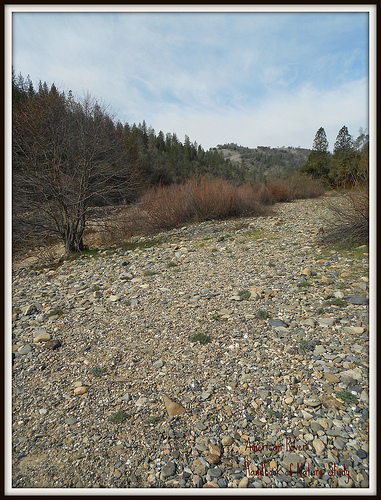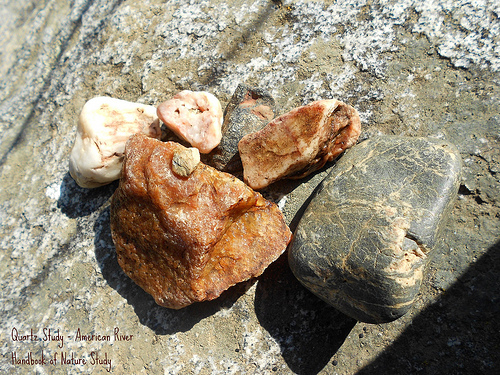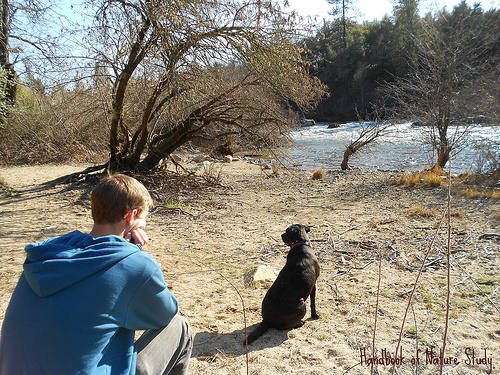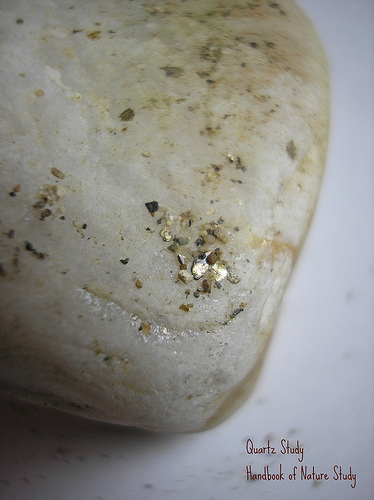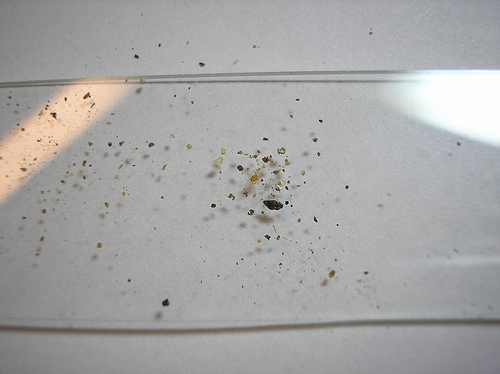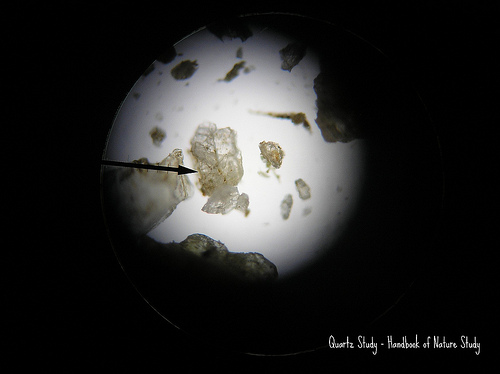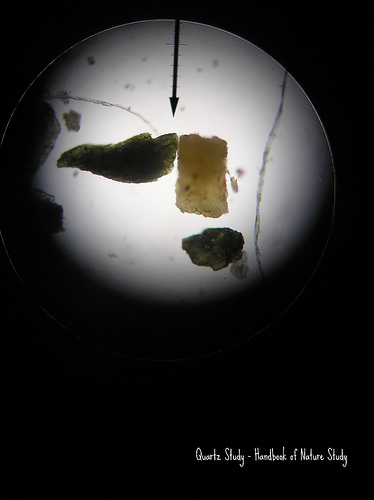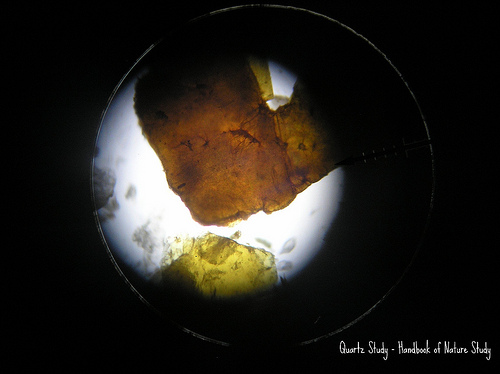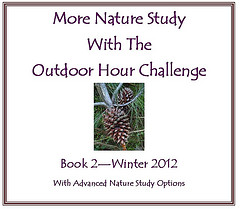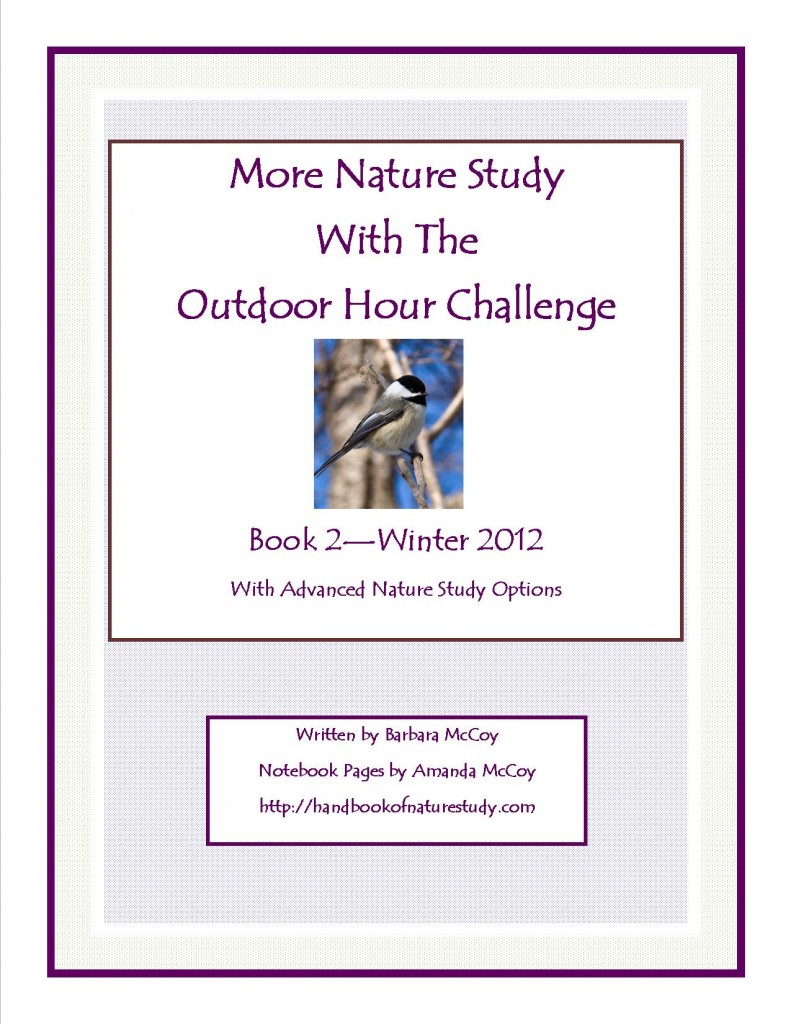Our quartz study has stretched on for weeks. We have had numerous rock collecting hikes and each time we come home we develop new questions to be answered. The supply of quartz in our area is seemingly endless. Once your eye starts to look for it…you see it everywhere.
Our family lives in the gold country of California. The gold rush started practically in our backyard. We drive by the American River every day…as the crow flies it is about 3 miles from our house. This area is full of old gold mines and many people still today make a living by mining and panning for gold (or using a sluice box). Where there is gold, there is quartz.
We collected milky quartz for the most part at the river, along with a variety of other “pretty” rocks. I have a special place for pretty rocks in my heart. It may be the hunting for them or the spotting of a particularly nice rock that keeps me coming back for more.
Mr. A shares my love of rocks and we enjoyed an afternoon this week at the river with the Kona dog. Kona likes sticks more than rocks so we occupied her with fetching sticks while we looked for something interesting along the rocky shore.
The sound of rushing water always seems to welcome a good thoughtful sit..even on an uncomfortable rock. This day we sat and enjoyed the warmth of the sun after a freezing morning. Our jackets were slipped off on the hike back to the car which was nice.
At home we started off with a magnifying lens, looking carefully at the surface of each rock. This can quite addictive once you get started and there really is a lot to see.
We noticed a colorful collection of sand on the surface of one rock and we had the bright idea to place it on a slide and look at it under the microscope.
We are still not sure if the shiny gold is actually gold or pyrite….probably pyrite flakes.
We placed a little sand on a microscope slide…our rocks all had small amounts clinging to the nooks and crannies.
Now this is where the study becomes even more interesting! We spent the next hour or so taking turns finding things on the slides to share with each other. It was like discovering a new dimension.
We now have a larger collection of quartz and pretty rocks, a growing understanding of what “sand” is after looking at it under the microscope, and an appreciation that we don’t know everything about everything. 🙂
Amazing world down there…who would have thought?
It is not too late to do your own study of quartz using the Outdoor Hour Challenge. You may be as amazed as we were.

